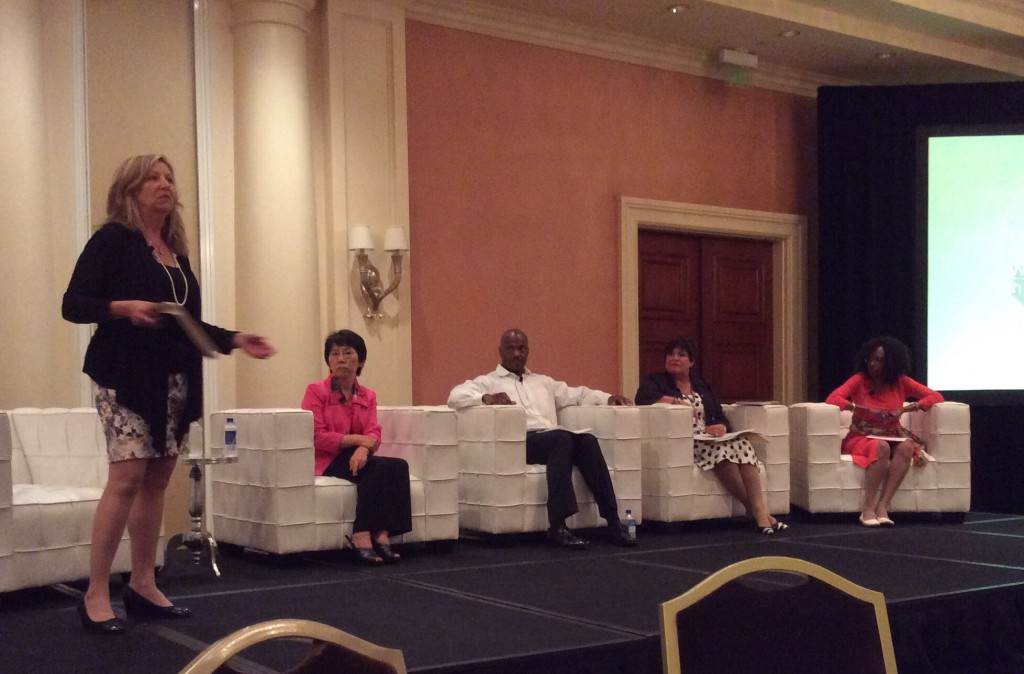Moving the Dial on Diversity & Inclusion
This panel at the Women Executives in Workers’ Compensation pre-conference event at the 2015 California Workers’ Compensation & Risk Conference offered solutions on how we can advance diversity inclusion in the workplace and industry as a whole.
Panelists included:
- Moderator: Joanne Wojcik, Director of Conference Programming at Business Insurance
- Darrell Brown, Chief Claims Officer at Sedgwick
- Euhnee Kim, CEO at EK Health
- Cyndy Larsen, Area Vice President at Kaiser On-The-Job
- Dawn Watkins, Director, IDM, at LA Unified School District
Diversity is counting heads and inclusion is making heads count. It is not about just having a diverse workforce, but how you use all employees to approach complex problems and issues. Leveraging and managing the diversity to get the best out of everyone is essential for organizational growth. The brainpower from various ages and ethnic groups can be very valuable to an organization. It must be a conscious choice to include everyone in your business.
It is extremely important for the workers’ compensation industry to embrace diversity. How healthcare and workers’ compensation is delivered has a tremendous impact on the end result. Certain cultures aren’t aware of the resources that are there for them or simply do not go to the doctor. Also, certain ethnicities are prone to certain medical problems. If you understand these issue up front, you can help correctly address them and provide solutions.
From an employer perspective, you are always looking for the best workers’ compensation outcomes. With a diverse workforce, it is important to have a high awareness of the differences you have in your employee base so that you know how to best approach employee injuries. Do you have resources for them so that they can understand their work comp process, including the languages that various employees speak? Items like this can help provide quicker solutions and help maintain costs.
From a TPA standpoint, it’s important to take a step back and understand that someone was injured, they probably do not know what to expect and they are scared. It is important to speak to the injured employee without using industry jargon and to take the time to explain expectations. This leads to a better experience for the injured employee, which leads to better outcomes.
Matching the culture of the provider to the culture of the injured worker is also important. Different cultures respond better to different approaches. Some prefer high-touch experiences and want to hear from the provider often. Others do not. There are essential components to assess, including healing beliefs, that can help get the injured employee back to work quicker if the provider understands.


